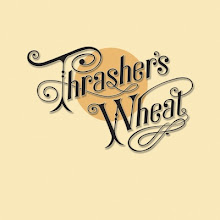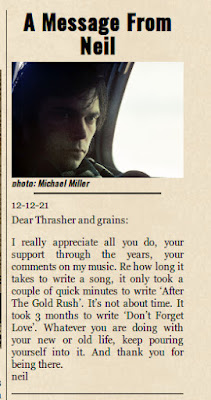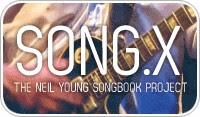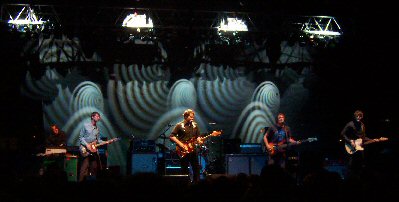Neil Young Archives: Getting The Best Audio Experience
The question of how to achieve the best audio experience on Neil Young Archives continues to be a challenging question for even the most sophisticated rustie audiophiles.
Over the years, we have heard a wide variety of solutions from simple to extremely expensive. We have been hearing about these dilemmas off & on going back to 2008 with NYA #1 and the BluRay system. While NYA does have a specific section on Listen | Times-Contrarian, even so, the options and complexities boggle many rustie minds.
So how to get
the right technology mix to enjoy NYA in all of its splendid ragged glory?
Are you looking for optimal high resolution audio for your phone? If so, which platform? Are you looking for optimal high resolution audio for your home system? Or for your car? Are you looking for home theater, surround sound, high definition video? And on and on.
We our selves here at TW HQ, have been building our own systems since a teenager with tuners, amps, pre-amps, mixers, etc and are a bit stumped on how best to proceed with our next upgrade.
Back in 2009, we embarked on a major system upgrade for the BluRay for NYA#1. Even then, we don't feel we ever really got the maximum effect of the high resolution 24/96 audio.
And here we are in 2021 trying to figure out options. We're shooting for nirvana and poor Thrashette is losing her patience. We had set a goal of trying to achieve the whole solution. A solution that allows playback from any device, anywhere.
Initially, we thought that wireless speakers were the route. But then discovered most don't support high resolution 24/96 audio which led us to BluOS. From NYA:
10-16-20A Home System For NYA
BluOS hi-res wireless distributed audio platform is expanding the integration of the Neil Young Archives (NYA) - worldwide, after originally being introduced in May to North America.
NYA members from around the world have asked for this and we’re appreciative of Lenbrook’s expansion. Lenbrook International is the developer of BluOS.
 image via "Horse Back" music video
image via "Horse Back" music videoEngineered and mixed by John Hanlon at Audio Casa Blanca Jan 6, 2012, assisted by Mark Humphreys and John Hausman
I've got a Redmi Note 9 S. (Android phone)It's ready to go and integrate with any old school analogue setup. Just connect like you would a portable CD player or minidisk from back in the day. I bought it specifically for its audio quality and massive expandable micro SD slot. A massive 500 gigabyte! That's approx 100 DVD's worth.
If a phone has an earphone socket it's got a built in DAC. You can run this into an old school amp setup using a simple analogue cable or plug headphones directly into the analogue jack.
Also you can use the newer type c usb socket out to analogue using the cable below. As illustrated below. No added tech interface needed. If you have a home hifi surround sound setup you can get a cable that does hdmi. I also have two Marshall Acton2 Bluetooth speakeers for convenience.
They don't receive full audio quality via Bluetooth but allow a non tethered approach yet also have an analogue in for tethering. They are a touch of vanity and cheaper yet superior quality speakers are available. If you've got an analogue speaker setup then I'd tether to it via the amp using cables.
The beauty of this phone is it's audio chipset...at the budget price. I don't have 'golden ears' but all ways of output sound amazing.
I hope this helps. It's the cheapest setup I could find it's camera is high quality too. Big screen, charge lasts all day.
Forgot to mention for my own files, I'm using USB Audio player pro. It's a simple interface. But has abilities to playback high quality files on SD cards. With lots of other features like Qobuz, tidal and shoutcast integration.
N7 player is fantastic but doesn't have as many options like Qobuz. But on a kindle fire setup it has a Dolby setting that just gives music a really nice depth, in time Amazon devices will probably be the goto for audio enthusiasts in the future but the storage capacity limitations on SD cards and tweaked applications make trouble shooting glitches hard whereas a pure Android platform has more users and developers. I wanted a DIY Pono./ Setup.The Redmi 9 audio chip setup is uniquely affordable. Also, it has a built in 'cast button' to send the screen to external TV's and monitors.
I'm going to then maybe build a Rig around a Kindle Fire 8 or 10 the big screen would be appealing for a static home setup.Amazon with its high quality switch to Audio means I would predict some very specific quality upgrades to its infrastructure very soon, targeting audiophiles but I haven't seen it yet.Note: The Archives App currently does not work properly (if at all) on a Kindle Fire 8 HD. 'Side loading' doesn't work properly.I'm going to try an analogue mouse with different Web Browsers to try get the Archives full content. The big screen is perfect for the visual side.
I haven't found a video player I'm really happy with. VLC and MX player being the best. I think maybe MXPlayer Pro will be my purchase to iron out the niggles.
So, if you want a DIY Pono then the Redmi note 9 s is my choice.If you want a home Rig only, I'm guessing waiting for the next Kindle Fire range might pay off.
I know this is all sounding a pain but I've tried lots of options beyond all this
The Redmi Note 9S uses the Qualcomm Aqstic WCD937X audio codec has an integrated DAC (Digital-to-Analog) converter that supports up to 192-kHz/24-bit playback. The audio codec also supports dual oscillators; the dual-clock design supports sampling frequencies 44.1kHz and 48kHz independently so your music files can be processed at native sampling rates without any conversion.
Qualcomm WCD9375 codec added an extra element of quality. To improve the audio, Qualcomm decided to work with a group of audiophiles called Golden Ears. These are people who are able to “identify the slightest distortions in the music, the characteristics of different digital filters, reverberation, colouring, panning, harmonics and more”.
This is actually a very rare skill and you have it trained or naturally. There are programs that must be followed to obtain Golden Ears certification and usually take years to complete. Most manufacturers that use Golden Ears are those that make really expensive audio products that sell for thousands of dollars. Qualcomm has now brought the same high quality to its smartphone codecs.
Qualcomm adjusted the WCD937x codec using comments from a Golden Ears group. They designed a digital audio filter to do this. This filter can also be customised so that OEMs can design it to meet different needs and have their own particular sound signature. Qualcomm says the latter is necessary as audio quality can be quite subjective.
Many thanks for sharing here Steven! Hopefully this will be helpful for others. Feel free to drop replies below.
Also, more details on "To Feel the Music: A Songwriter's Mission To Save High Quality Music" by Neil Young and Phil Baker.
"To Feel the Music"
by Neil Young and Phil Baker
Labels: audio, high resolution, neil young, neil young archives, nya




































 Human Highway
Human Highway

















 Concert Review of the Moment
Concert Review of the Moment





 This Land is My Land
This Land is My Land

 FREEDOM In A New Year
FREEDOM In A New Year









 *Thanks Neil!*
*Thanks Neil!*




![[EFC Blue Ribbon - Free Speech Online]](http://www.thrasherswheat.org/gifs/free-speech.gif)











 The Unbearable Lightness of Being Neil Young
The Unbearable Lightness of Being Neil Young Pardon My Heart
Pardon My Heart



 "We're The Ones
"We're The Ones  Thanks for Supporting Thrasher's Wheat!
Thanks for Supporting Thrasher's Wheat!




 This blog
This blog 
 (... he didn't kill himself either...)
#AaronDidntKillHimself
(... he didn't kill himself either...)
#AaronDidntKillHimself









































































 Neil Young's Moon Songs
Neil Young's Moon Songs




 Civic Duty Is Not Terrorism
Civic Duty Is Not Terrorism Orwell (and Grandpa) Was Right
Orwell (and Grandpa) Was Right


 What's So Funny About
What's So Funny About 



6 Comments:
The biggest difference between the hi-res and CD version of the Archives Vol. II is the mastering. The CDs have peak extension applied through HDCD. Now, most players don't have the capability to decode HDCD, meaning the top 9dB is squashed into 3dB, thus reducing the dynamic range of the CDs.
As for being able to discern 24/192 from 16/44.1: http://archimago.blogspot.com/2014/06/24-bit-vs-16-bit-audio-test-part-ii.html
In a peer group that included audiophiles as well as musicians and engineers, there is no conclusive confirmation that the difference is audible.
And if that doesn't convince you: https://audiophilestyle.com/blogs/entry/161-1644-vs-24192-experiment/
Best tip: don't forget to listen to the music, rather than fretting over the shortcomings of your system or that you might not be extracting all of the music. Unless you are in a recording studio, listening to the original masters on studio monitors, your always going to hear a compromise.
Vinyl
Off topic a bit: It seems that the Archives website has taken down the ‘post-it notes’ that served as place holders for unreleased albums from the timeline feature. Does anyone have any insight on this?
I have been so fortunate to be able to use equipment that could play the released “newest” media which Neil has embraced over the years: Stereo VCR and TV, HDCD, 16:9 TV, DVD-Audio, Blu-Ray, Pono. But some of the equipment breaks (HDCD/DVD-Audio Player being the most-recent casualty). And not having unlimited money, it seems to be a battle to have a nice setup that lasts. I constantly feel I am always a step behind. The closest I came to being caught up was Archives I having bought a PS-3 (as recommended by Archives Guy or Neil himself at the time).
I know audio and video preferences are somewhat individual too - there are people who care A LOT about missing bits or watts or pixels or decibels, etc. There is a group of people who think that a higher resolution audio presentation - though undetectable in blind testing - provides a more satisfactory listen for THEM -vs- what their experience would be hearing the same music at the lower resolution. I wonder if that is true for Neil - just curious if it is. I have been blown away with great headphones - not even the most expensive ones - Beats seem really to deliver to my ears and the Bose pair ( “Bose Quiet Comfort 35 II “ ) I have now are awesome - but they are Bluetooth so there is some loss in the resolution when I use that feature (they also have hard wiring as well).
Wish there was a good, updated guide to providing fans with recommended equipment grouped by expected price: perhaps an entry level setup, mid-level setup and a sky-is-the-limit setup.
I don’t know the best way to solve it. I guess recommendations from you all is about the best “real” advice. If we see a good piece of equipment is on sale somewhere, sharing that would be great for us all.
What do you use to listen to Neil’s music?
Sent respectfully to all,
The Muse
BOONTON NJ
@ Harm - great tip:
totally agree about not getting too caught up in all of the technologies. However, it is something that audiophile rusties are quite passionate about.
it seems that this simplicity vs quality issue is never ending.
you name it whether 8 tracks, cassettes, iPods or whatever, there's always a tradeoff.
that said, it does seem we're approaching a holy grail moment of virtually unlimited high resolution files being able to stream anywhere. NYA is truly a breakthrough platform awaiting the ultimate next technology leap.
@ Unknown - we hear you on vinyl and love our turntable. altho used rather infrequently, it is nice on occasion.
@ Rabbi Randy - wouldn't read too much into it. last year, a bunch of stuff got pulled down and semi-panic ensued. shortly thereafter a bunch of updates were posted.
@ The Muse in BOONTON NJ - the thinking behind your comment was actually similar to what inspired the dialogue w/ Steven we posted above.
there are so many options and price points out there, it has driven us a bit daffy.
so you're right. let's keep exchanging our experiences and investments and learn from one another.
we can do this.
afterall, if we were able to get a virtual handshake and hug between Alan and Jonathan - the 2 most diametrically opposed rusties we've run into, then anything is possible!
as Meta Rocker says: om shanti
Years ago my wife had a real problem with CD’s. She described it as if she was being pelted by ice crystals and experienced terrible fatigue after only two or three discs. I did some research and found that there was companies making Tube CD Players, so we purchased one because it has a built in Digital / Analog Converter that sends the digital signal through the Tubes and warms up the sound to something closer to vinyl. Now she can listen to CD’s all day without any real problems. We both still prefer vinyl, but there is some great music one can’t get on vinyl. I hope this helps.
Peace 🙏
Post a Comment
<< Home